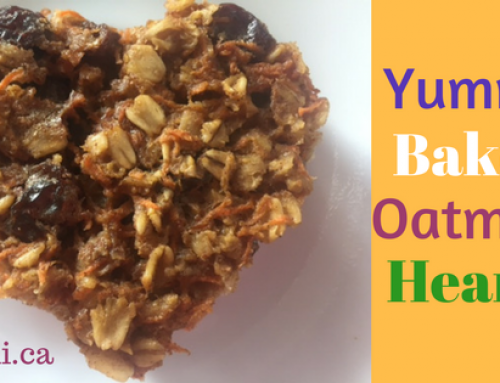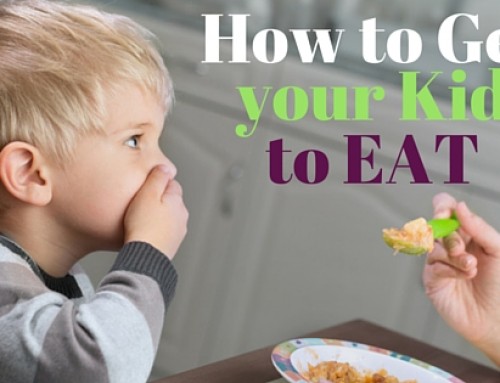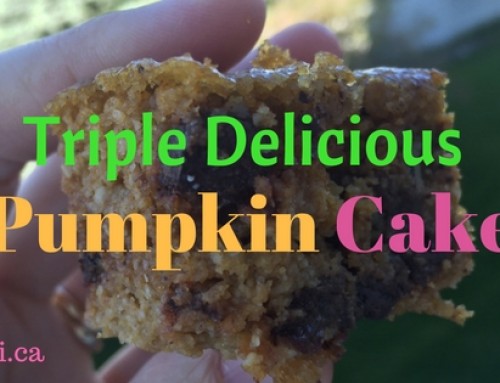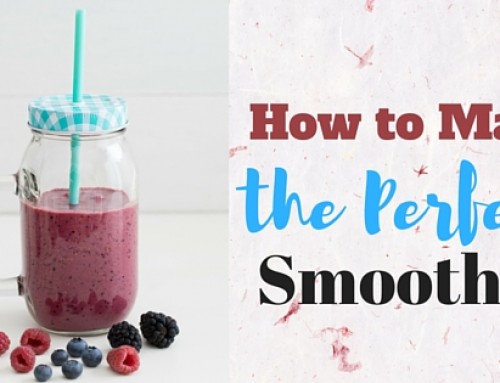Ay sugar! We love it. We hate it. We hate that we love it. Do we have a complicated relationship with sugar? Or is it simple? We crave it and we eat it. It seems simple. What is hard is to stop eating it. We know it’s bad for us, yet we keep eating it. But how can we cut down sugar without feeling frustrated and deprived? Keep reading to find out.
A good friend of mine recently asked me for help on how to cut down sugar in her child’s diet. I am so glad she did as I have been thinking about sharing my thoughts on sugar for a while and her question convinced me to finally write my ideas here, on my blog.
I used to love sugar. I still do. But my relationship with sugar changed over the years. It doesn’t control me anymore. I control when and under what form I eat it. I used to drink pop on a regular basis. I used to eat sweet packaged foods on a regular basis.
My sugar intake habits are healthier now as I choose where sugar comes from and how much I eat. I am happy where I am at.
My job got a bit more difficult after I had my kids. How do I teach them about sugar? How do I teach them to have a healthy relationship with sugar without forbidding it and without giving it more power? How do I teach them that sugar is bad (but not all of it), that sugar can have a strong hold on us and it’s up to us to control the relationship we have with sugar?
One of my children loves sugar (I wonder if this has anything to do with more formula, which is artificially sweetened, when they were little than the other child). The other one seems to have preferences for specific sweets and with a lower overall intake.
I‘m not going today into why sugar is bad for us. There are tons of articles about that. Here are just a few:
Sugary breakfasts and children
Awesome BBC documentary on sugar
What I realized is that my mission as a mom is ongoing and I’ll always try to find new ways (or improve my current ones) on how to help my children develop and maintain a healthy relationship with sugar. The kids are growing, their understanding of life deepens, and they need new ways to have things explained to them, in a more mature way, with more scientific reasons (which there are plenty of).
I gathered 21 tips to help ME and YOU cut down sugar in our families’ diet. I hope you’ll find them useful and easy to apply and I hope you’ll let me know if they work for you and your family.
These tips will not only help us on our quest to cut down our children’s sugar intake, but they will also help us in lowering our own sugar intake. One of the best things about this is that when we eat less sugar our immune system works better and we get sick less frequently.
Caution! If you or one of your family members has diabetes, the discussion is completely different. (Let me know if you need personalized help. I am always happy to help!
But first, let’s see where sugar comes from. Here’s a list of the most common sources of sugar:
- Fruits.
- Vegetables, especially root (starchy) vegetables such as beets, carrots, parsnips, potatoes, sweet potatoes, and turnips.
- Legumes such as beans, lentils, and peas.
- Whole grains such as barley, buckwheat, bulgur, corn, millet, oats, rice, rye, and wheat.
- Other plants (maple syrup from the maple tree, cane sugar and blackstrap molasses from the cane sugar plant, date sugar from dates, coconut palm sugar from coconuts, honey made by bees using the pollen of various flowers, agave syrup from the agave plant, and stevia from the stevia plant).
- Artificial sweeteners such as aspartame, saccharin, sucralose, acesulfame potassium, etc.
- Processed (refined) sugars such as white sugar from the cane sugar plant and high fructose corn syrup from corn. These two deserve their own category. Although they’re extracted from plants, they’re both highly processed and stripped of all nutrients found in these plants (vitamins and minerals), sugar being the only ingredient left (more specifically, fructose and glucose).
One thing to remember is that sugar is sugar no matter the source and the body treats it as such. However, when sugar is combined with nutrients that the body needs such as fiber, protein, and/or fats (think oats mixed with bananas and coconut milk), it’s released slowly into the blood and doesn’t cause a spike in blood sugar level.
Processed sugars get metabolized quickly as the sugar is released quickly in blood. This increases the level of blood sugar (hyperglycemia). The pancreas will in turn secrete high amounts of insulin to help blood sugar levels return to normal. If this situation occurs every day, every week, for months (even years) in a row, the pancreas becomes exhausted and can’t make as much insulin as the body needs, and diabetes type II shows up at our door.
Imagine how we feel after we eat a breakfast full of processed sugars (cereal for example). Shortly after eating, we experience a rush of energy followed by a sugar crash and cravings for something sweet. If we choose another processed food full of sugar, the sugar rush and crash will follow again. This sugar roller coaster pattern can repeat several times during the day. This translates into us (and our children) being unable to concentrate and feeling moody, fatigued, hyperactive, etc.
It’s impossible to eliminate all sugar, as this would mean to stop eating all fruits, vegetables, legumes, and whole grains that our body needs to stay healthy. A better way is to eliminate all the processed sugars and also to cut down sugar (the overall intake). What do you think? Is this a reasonable approach?
Here are the first 3 steps (that I consider non-negotiable) we can take to eat less processed sugar.
- Remove all white processed foods such as white bread, white pasta, and white rice. Replace them with whole grain bread, whole grain pasta, brown rice, and wild rice. You can also find pasta made out of quinoa, wild rice, corn, black beans, etc, or make zucchini noodles.
- Eliminate all drinks that have artificial sweeteners, high fructose corn syrup, and many other chemicals. Some examples are soft drinks, sweetened water, sports drinks, energy drinks, and some fruit juices.
- Store-bought ketchup, BBQ sauce, salad dressings, etc. all often have added sugars. Read the label before you buy them.
The next steps also help cut down the amount of processed sugar we eat. These options help us cook with healthier, sweeter choices and also satisfy our sugar craving when it hits.
- Use raw fruits (bananas, pears, etc) and dried fruits (dates, raisins, etc.) as sweeteners in recipes.
- Cooked fruits (such as baked apples or grilled pineapple) taste sweeter than raw fruits.
- Make ice cream from frozen fruits (grapes, bananas, berries).
- Include more sweet vegetables in your diet (sweet peas, sweet potatoes, sweet peppers, carrots, beets, roasted onions).
- Use spices such as cinnamon, nutmeg, cloves, all spice, etc. in your baking. Adding more flavour and using less sugar is an easy way to satisfy sugar cravings.
- Include more healthy fats in your family’s diet such as: avocados, nuts (walnuts, almonds, pistachios, pecans, etc.), eggs, cheese, yogurt, hemp seeds, flax seeds, chia seeds, etc. Healthy fats curb down the desire to eat sugar. (Note: don’t give your child low-fat yogurt as the fat was removed and replaced by added sugar.)
- Many of us eat something sweet when we are bored, lonely, or anxious. Going for a walk, calling a friend, or simply brushing teeth after a meal can put a stop to that.
- Eat a piece of dark chocolate instead. The darker the chocolate is, the less sugar is has. And if you want to go a step further, try cacao nibs. They are tiny pieces of roasted cacao beans.
- Sour foods, such as pickles, sauerkraut, etc. tend to diminish the desire to eat something sweet.
- And last, but not least, drink 8 cups of water every day (children need less as they are smaller). I can’t emphasize enough how important water is for us. Our bodies need water in order to function optimally.

Loaded Delicious Porridge
Here are a few of my favourite healthy and delicious sugary drink replacements that help cut down sugar intake.
- Warm herbal (fruity) tea.
- Freshly squeezed juice.
- Water infused with cucumber slices, strawberry slices, lemon slices, or mint (the sky is the limit in what kinds of fruits, vegetables, or herbs you can add to naturally flavour the water).
- Milk and unsweetened milk alternatives such as almond milk, hazelnut milk, hemp milk, oat milk, etc. with a splash of vanilla and a pinch of cinnamon.
- Ice tea (tea with ice cubes, not packaged ice tea).
- Mineral water (water from a natural spring that has naturally-occurring minerals and carbonation).
- Seltzer water (water that has been artificially carbonated).
And here are a few delicious and nutritious snacks with no processed sugar that my family and I love.
- Unsweetened apple sauce mixed with cinnamon.
- Best banana wrap ever
- Yogurt mixed with fresh or frozen strawberries (any berries work great).
- 3-ingredient mango coconut popsicles and smoothie
- Mix of walnuts, almonds, and pecans with dried cherries and big coconut flakes.
- Delicious loaded porridge
- Blackberries and raspberries topped with whipped cream or coconut cream.
- Good morning parfait
- Apple slices dipped in nut butter and sprinkled with coconut flakes.
- This is a salty snack that my whole family can’t stop eating.
- We put cashew butter on these yummy crackers. They are also tasty on their own.

Best Banana Wrap Ever
Do you like any of the snack ideas above? Print your favourites and tape them to your fridge. Next time you need something sweet for your family you will have an easy reference.
And don’t forget! The less sugar we eat, the less we crave it.
Don’t feel guilty about the foods you choose to give to your family. If you lapse once in a while, don’t forget that the next day is a new day when you can help them make healthier choices.
And if all of the above fail, remember that a small serving of brownie is a better choice than a big one.
I would love to know your thoughts on sugar. What is your family’s relationship with sugar? Do you keep it at distance or close by? What would you like your relationship with sugar to be?
Please note that this post contains affiliate links and I only mention products my family loves and uses. If you choose to buy the products through my links, I will receive payment. However, the price of the product stays the same. Thank you for supporting my website and my mission to help families lead healthy and happy lives! XO








Great article! My daughter has two autoimmune diseases and this is been the hardest thing to control. She has a sweet tooth, Which is very hard, but we went Paleo three years ago. Best thing we ever did. I only allow her to have natural sweetener such as honey and maple syrup. But as you know sugar is sugar no matter what form it comes in. We have been able to control both autoimmune diseases with this diet.
Thank you, Renee. When it comes to lowering sugar, the Paleo diet works great. Glad to hear that the autoimmune diseases are under control!
Great post, so many useful tips to consider. Thanks for sharing.
Happy to help, Leila.
Great tips! While I’m not actively trying to cut out sugar, I do try to eat healthy. My daughter was breast fed, and loves sweets, so it may not be the formula thing. 😉
Danielle, thank you so much for your thoughts.
As a former dietitian I think you covered all the points! And don’t we all need to cut down our sugar? Guilty as charged over here!
Kim, I am so glad to read your feedback!
These tips are really helpful! We are trying to be more mindful of these things!
Yes, Patricia, this is a big part of what we can do (and it’s a lot actually!): always trying until we succeed.
I also want to avoid sugar if possible. Will apply your tips in my next grocery shopping 🙂
Good luck, Sharon! You can do it :)!
These are great tips! It’s crazy to think of things like ketchup and BBQ sauce that have tons of sugar and you don’t even realize it!
Xo,
Alexandra Christine Blog
http://www.alexandrachristineblog.com
Alexandra, unfortunately so many foods have hidden sugars. I guess they are not so much hidden, as unexpected. All we need to do is to read the labels.
Thank you for sharing, we are currently working on cutting down on sugar and processed foods in our diets, I love the banana wrap idea it’s a great treat!
I hope your journey to cutting down sugar will be successful, Lucy! We love the banana wrap around here :). Such an easy, healthy, and tasty snack!
Thank you, Alina! This article is motivating to keep working on it. While we have made many positive choices over the years, we still can improve, learn, challenge ourselves to do better. I love the thought:”Tomorrow is a new day.”
This is one of the awesome things of being human. We can keep working on improving ourselves and our life. I am always working on my diet and lifestyle choices, be it nutrition, sleep, relaxation time or sleep.
I was right there with you up until your comment about formula. They aren’t all artificially sweetened and feeding them to your children doesn’t have detrimental effects.
Thank you for the information.
Hi Amber, I would love to know which baby formulas you are thinking of.